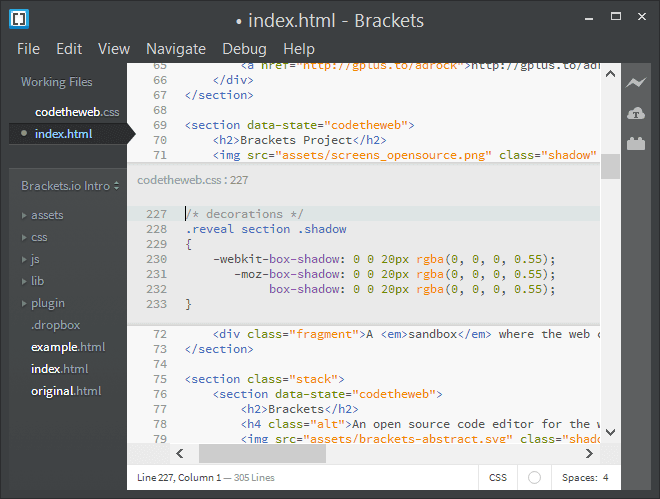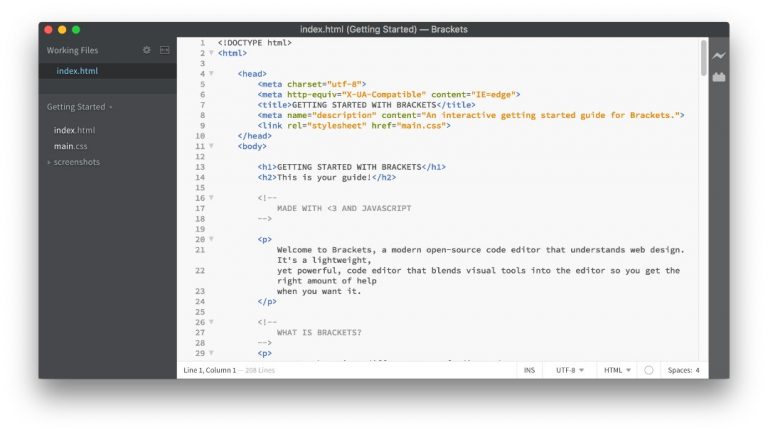

Internally RichEdit follows the lead of Word and the Mac in terminating paragraphs with a CR and converting LF’s and CRLF’s to CR when reading in a file or storing text via an API like WM_SETTEXT or ITextRange2::SetText2. So, a file with LF- terminated lines remains LF terminated and displayed correctly. To fix this problem, Notepad went one better: it checked to see which line ending came first and then made that line ending the default for the file. I used to open the Unicode Character Data files, which contain LF-terminated lines, with WordPad and save them to convert the LF’s to CRLF’s so that Notepad would display them correctly. For years Notepad didn’t break Unix-convention lines that terminated with a LF (U+000A) instead of a CRLF (U+000D U+000A). The classic Notepad has two handy features that weren’t implemented in RichEdit: line-ending detection (CR, LF, CRLF) and the “Show Unicode control characters” mode (discussed next). This post describes some additions and implementation details. Accordingly, it’s taken significant effort to use RichEdit as the new Notepad’s editing engine. And classic Notepad has been improved in various ways, such as better performance, line-ending detection (CR, LF, CRLF), and a “Show Unicode control characters” context-menu option. Notepad is often used to view large files, so high performance is important, and lines can be crazy long. But those plain-text controls have been small and typically exist in dialog boxes. RichEdit has had plain-text controls ever since Office 97 (last century!) and they’ve been used myriad times.

You might guess that using a RichEdit plain-text control in Notepad would be a slam dunk. In addition to a Windows 11 look with rounded corners and a dark-theme option, the new Notepad includes several standard RichEdit editing enhancements, such as Alt+x for entering Unicode characters, Ctrl+} for toggling between matching brackets/parentheses, multilevel undo, drag & drop, color emoji, and autoURL detection. In fact, the app updates its system on a monthly basis to make encoding faster and easier.The new Windows 11 Notepad uses RichEdit and runs on up-to-date Windows 11 installations. And since it is open-source, it allows other users to make modifications to make it even better. This program solution is a project made by a community of web developers. To locate the extension manager, simply go to the File menu or click the icon in the upper right corner of the main interface.
#BRACKETS NOTEPAD INSTALL#
It has an extension manager which allows you to browse and install numerous extensions depending on your needs. Furthermore, the app comes with a strong extension framework. The app also comes with language server protocol supports and PHP tooling support.
#BRACKETS NOTEPAD UPDATE#
In addition to providing you a simple workspace for your coding tasks, the app offers other features that will help you complete your job easily.Īmong the list of reliable tooling it provides are the parameter hints, which include linting, jump to definition, auto-update bug fixes, and update notification targeted to specific platforms.
#BRACKETS NOTEPAD CODE#
Should you need assistance with code syntax and code options, the Quick Edit option will provide help along the way. Its code completion features let you quickly assemble apps without even knowing the exact syntax. Feature-packed text editorīrackets is a solid editor which has everything you need when you work with files and directories as well as creating new files. It allows you to use Quick Edit and Live Highlight with LESS and SCSS files making working with them easier. It works with preprocessors in a new way, as well. That way, you can work on your code side-by-side without any popups. The app will then show you all the CSS selectors with that ID in an inline window. You only have to put your mouse cursor in that ID and push Command/CTRL + E.


If you wish to work on the CSS that applies to a specific ID, you can possibly do so using this text editor software. This feature syncs Brackets with your browser, allowing you to jump back and forth between the real source code and the browser view.


 0 kommentar(er)
0 kommentar(er)
